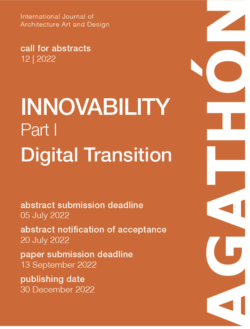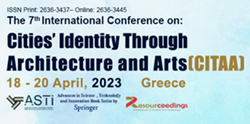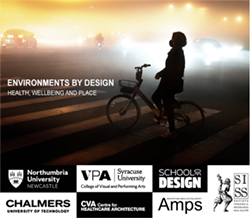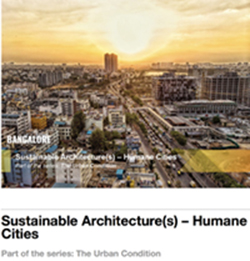ISSN (online): 2411-9660
Call of the Journal:
- Design Constraints, Solutions and Optimization in Phase Change Materials Thermal Management Systems for Space Technology and Applications
- Environmental Futures | Creative Explorations Through Science, Engineering, Design, and Art
- Integrated Strategies for Sustainable Territorial Design
- Planning for Home Renewable Energy Systems
Sep
2021
Increasingly high specifications and stringent criteria for energy efficiency and the advent of renewable energy sources with intermittent availability have triggered a research interest spike for phase change materials and considerably extended their range of applicability over the past few decades. Although PCMs operation principle is straightforward, some complex and not fully understood phenomena such as hysteresis and supercooling occur during the phase change process. Although heat storage and thermal control using PCM can be considered a mature technology, there is still room for improving its efficiency – which is usually defined depending on the features and demands of each specific application. Space technology is one of the PCM application directions. Orbital environments exposing the spacecraft to highly varying radiative fluxes are similar with conditions under which PCMs have general applicability. Multiple constraints encountered in this industry, such as low component mass, thermal cycling over a large temperature range, thermal shock, high reliability, few or no moving parts, and low energy consumption, make PCMs a suitable candidate for thermal regulation of space application components. Application of PCMs in space systems has to overcome several challenges compared to terrestrial applications. PCMs consist usually of organic substances with relatively low thermal diffusivity. With a mission-dependent number of thermal cycles over a 24-hour period (varying from sixteen in the case of low Earth orbit vehicles to as low as one in the case of geostationary orbits), thermal regulation systems must reject/store/transport highly varying values of the heat flow, which makes thermal diffusivity a key property of the materials. Thermal conductivity enhancement techniques are necessary in case of PCMs to render thermal regulation systems suitable for transient regimes with high values of heat flow. This is especially important for space applications, since heat is transferred through conduction and radiation only. The Special Issue aims to gather research data and applications of PCMs in space technology, especially in thermal regulation of Earth orbital spacecrafts, where thermal stresses on spacecraft components are particularly significant. Submissions are particularly encouraged in but not limited to the following topics: Heat storage materials for space applications; Passive heat transport systems employing PCMs in spacecrafts; Enhancement of thermal conductivity for PCMs for space applications; PCMs integration with pumped fluid loops; Increasing the heat transport capacity of passive thermal transfer systems; Integration of PCMs in two-phase heat transport systems (liquid–vapor); Thermal coupling between external surfaces and internal heat flow paths.
Keywords: Spacecraft thermal control/passive thermal control; Orbital thermal environment; Phase change materials for space applications; PCM systems transient response; Enhancement of PCMs’ thermal conductivity.
Design Constraints, Solutions and Optimization in Phase Change Materials Thermal Management Systems for Space Technology and Applications
Increasingly high specifications and stringent criteria for energy efficiency and the advent of renewable energy sources with intermittent availability have triggered a research interest spike for phase change materials and considerably extended their range of applicability over the past few decades. Although PCMs operation principle is straightforward, some complex and not fully understood phenomena such as hysteresis and supercooling occur during the phase change process. Although heat storage and thermal control using PCM can be considered a mature technology, there is still room for improving its efficiency – which is usually defined depending on the features and demands of each specific application. Space technology is one of the PCM application directions. Orbital environments exposing the spacecraft to highly varying radiative fluxes are similar with conditions under which PCMs have general applicability. Multiple constraints encountered in this industry, such as low component mass, thermal cycling over a large temperature range, thermal shock, high reliability, few or no moving parts, and low energy consumption, make PCMs a suitable candidate for thermal regulation of space application components. Application of PCMs in space systems has to overcome several challenges compared to terrestrial applications. PCMs consist usually of organic substances with relatively low thermal diffusivity. With a mission-dependent number of thermal cycles over a 24-hour period (varying from sixteen in the case of low Earth orbit vehicles to as low as one in the case of geostationary orbits), thermal regulation systems must reject/store/transport highly varying values of the heat flow, which makes thermal diffusivity a key property of the materials. Thermal conductivity enhancement techniques are necessary in case of PCMs to render thermal regulation systems suitable for transient regimes with high values of heat flow. This is especially important for space applications, since heat is transferred through conduction and radiation only. The Special Issue aims to gather research data and applications of PCMs in space technology, especially in thermal regulation of Earth orbital spacecrafts, where thermal stresses on spacecraft components are particularly significant. Submissions are particularly encouraged in but not limited to the following topics: Heat storage materials for space applications; Passive heat transport systems employing PCMs in spacecrafts; Enhancement of thermal conductivity for PCMs for space applications; PCMs integration with pumped fluid loops; Increasing the heat transport capacity of passive thermal transfer systems; Integration of PCMs in two-phase heat transport systems (liquid–vapor); Thermal coupling between external surfaces and internal heat flow paths.
Keywords: Spacecraft thermal control/passive thermal control; Orbital thermal environment; Phase change materials for space applications; PCM systems transient response; Enhancement of PCMs’ thermal conductivity.
DOAJ, Inspec (IET), Norwegian Register for Scientific Journals, Series and Publishers, Scopus, CLOCKSS (Digital Archive), e-Helvetica (Swiss National Library Digital Archive), Academic OneFile (Gale/Cengage Learning), Google Scholar, ProQuest Central (ProQuest), Science In Context (Gale/Cengage Learning).
Info at: www.mdpi.com/journal/designs/ap
Guest Editor
Dr. Bogdan Diaconu









